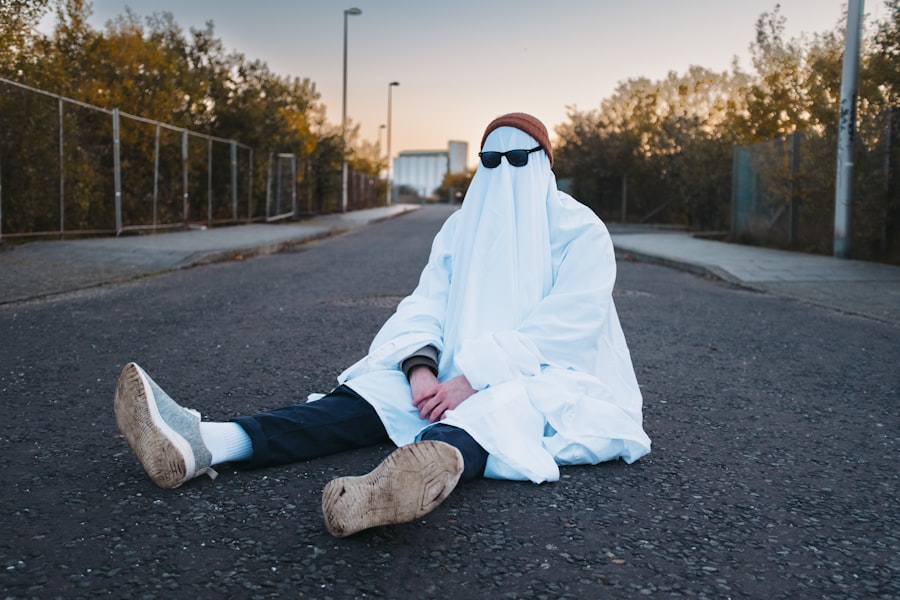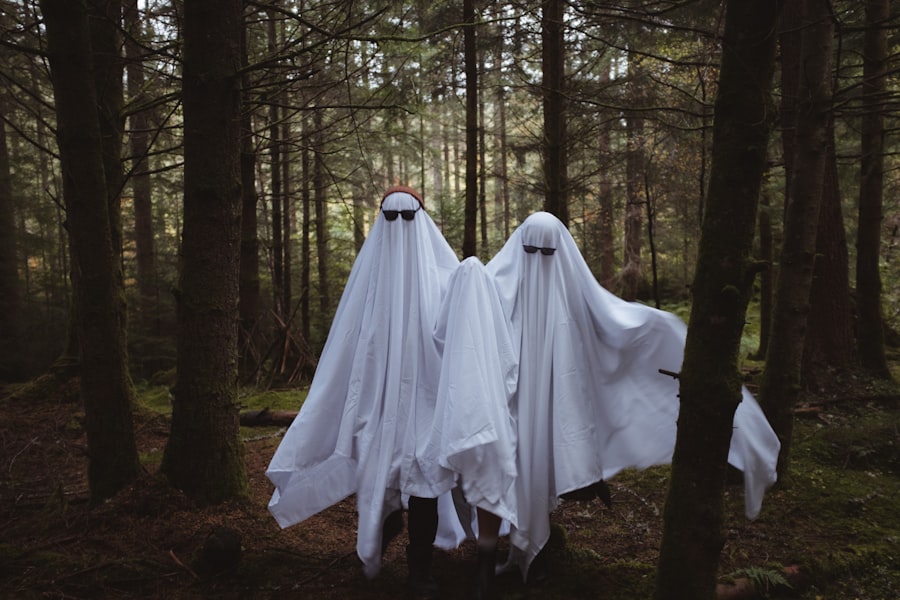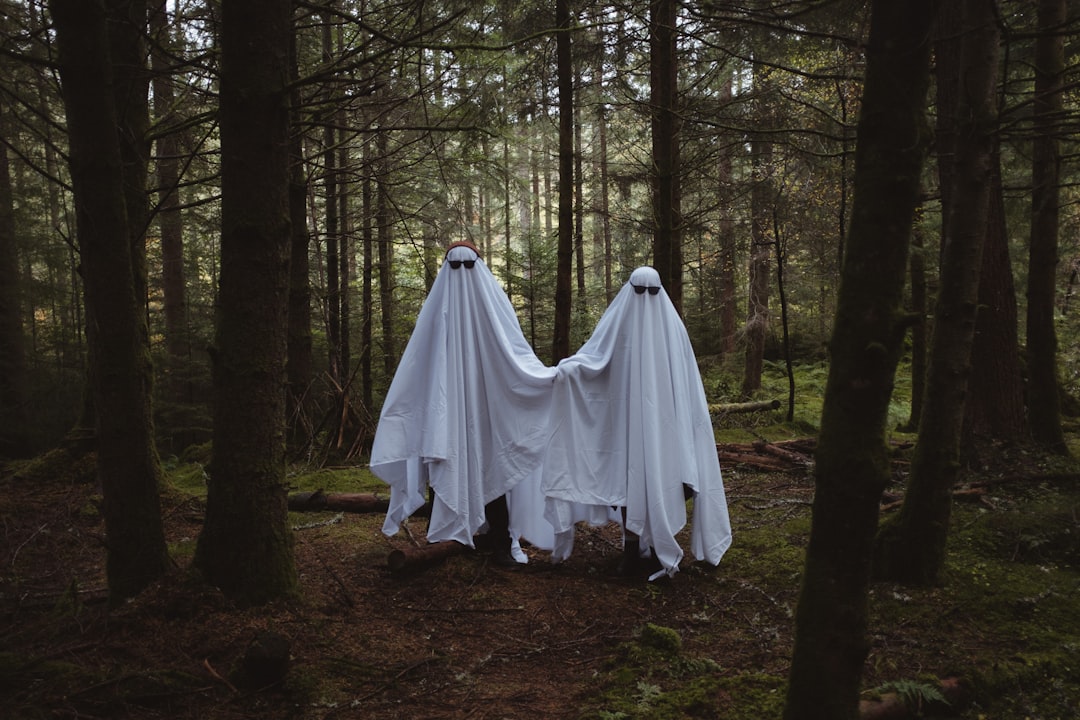Throughout history, the concept of ghosts has captivated human imagination, weaving itself into the fabric of cultures across the globe. In ancient civilizations, such as those in Egypt and Greece, the belief in spirits was deeply intertwined with their understanding of life and death. Egyptians revered the afterlife, constructing elaborate tombs and mummifying their dead to ensure a safe passage into the next world.
Similarly, the Greeks believed in a realm of spirits that lingered among the living, often seeking vengeance or closure for unresolved matters. These early beliefs laid the groundwork for how societies would perceive and interact with the idea of ghosts. As time progressed, the notion of ghosts evolved, influenced by religious doctrines and societal changes.
The Middle Ages saw a surge in ghostly tales, often tied to Christian beliefs about purgatory and the souls of the deceased seeking redemption. This period also marked the beginning of ghost stories as a form of entertainment, with tales shared around fires or in literature.
This era sparked a wave of paranormal investigations, leading to the establishment of ghost hunting as a legitimate pursuit. Today, modern paranormal investigations utilize technology and scientific methods to explore these age-old beliefs, bridging the gap between ancient lore and contemporary inquiry.
Key Takeaways
- Ghostly beliefs have been present in human history since ancient times, with various cultural interpretations and folklore shaping our understanding of the paranormal.
- Theories on the existence of ghosts range from spiritual and religious explanations to scientific and psychological perspectives, reflecting the diverse ways in which people interpret and experience ghostly phenomena.
- Electromagnetic fields have been linked to ghostly encounters, with some researchers suggesting that fluctuations in EMF levels may contribute to perceived paranormal activity.
- Psychological factors, such as perception and belief, play a significant role in ghostly encounters, influencing how individuals interpret and experience supernatural phenomena.
- Environmental conditions, including lighting, temperature, and acoustics, can influence the perception of paranormal activity, highlighting the importance of considering the physical surroundings in ghostly investigations.
Theories on the Existence of Ghosts: From Spiritual to Scientific Explanations
The existence of ghosts has been a topic of debate for centuries, with theories ranging from spiritual interpretations to scientific explanations. On one hand, many cultures maintain that ghosts are the spirits of deceased individuals who have not yet moved on to the afterlife. This belief is often rooted in religious or spiritual frameworks that emphasize the continuity of existence beyond death.
For those who subscribe to this view, encounters with ghosts can be seen as opportunities for communication or closure, reinforcing the idea that life continues in some form after physical demise. Conversely, scientific explanations offer a more skeptical perspective on ghostly phenomena. Researchers have proposed various theories that suggest that what people perceive as ghosts may be attributed to psychological factors or environmental influences.
For instance, some scientists argue that electromagnetic fields (EMFs) can affect human perception and create sensations often associated with ghostly encounters. Others point to sleep paralysis or hallucinations as potential explanations for sightings and experiences attributed to spirits. This dichotomy between spiritual beliefs and scientific reasoning continues to fuel discussions about the nature of ghosts and their existence.
The Role of Electromagnetic Fields in Ghostly Phenomena

Electromagnetic fields (EMFs) have emerged as a focal point in discussions about ghostly phenomena, with many paranormal investigators believing that fluctuations in these fields can indicate the presence of spirits. EMFs are produced by various sources, including electrical appliances, power lines, and even natural phenomena like lightning. Some researchers suggest that when EMF levels are unusually high or low, they can create sensations such as unease or anxiety, which may lead individuals to interpret their experiences as ghostly encounters.
Moreover, certain frequencies within the electromagnetic spectrum have been linked to feelings of dread or discomfort. For instance, studies have shown that exposure to low-frequency sounds can induce feelings of fear or anxiety in humans. This phenomenon has led some investigators to hypothesize that ghosts may manipulate EMFs to make their presence known.
While this theory remains controversial, it highlights the complex interplay between environmental factors and human perception in shaping our understanding of ghostly experiences.
Psychological Factors and Ghostly Encounters: Exploring the Power of Perception
| Psychological Factors | Ghostly Encounters |
|---|---|
| Belief in the supernatural | Frequency of reported encounters |
| Perception of fear or anxiety | Impact on individual well-being |
| Cultural influences | Variation in reported experiences |
| Memory and recall biases | Accuracy of reported encounters |
The human mind is a powerful entity capable of shaping our perceptions and experiences in profound ways. When it comes to ghostly encounters, psychological factors play a significant role in how individuals interpret their experiences. For many, fear and anxiety can heighten sensitivity to environmental stimuli, leading them to perceive ordinary occurrences as supernatural events.
This heightened state of awareness can create a feedback loop where individuals become more attuned to potential ghostly signs, reinforcing their belief in the paranormal. Additionally, cognitive biases can influence how people interpret ambiguous situations. The tendency to see patterns or make connections where none exist—known as pareidolia—can lead individuals to perceive faces or figures in shadows or reflections.
This phenomenon is particularly relevant in low-light conditions where visual cues are limited. As a result, what one person may interpret as a ghostly apparition could simply be a trick of light or shadow, shaped by their expectations and fears.
Environmental Conditions and Their Influence on Perceived Paranormal Activity
Environmental conditions can significantly impact how individuals perceive paranormal activity. Factors such as temperature fluctuations, humidity levels, and even atmospheric pressure can create sensations that may be interpreted as ghostly encounters. For instance, sudden drops in temperature are often associated with ghost sightings, leading many to believe that spirits are present when they feel a chill in the air.
This correlation between environmental changes and perceived paranormal activity suggests that our surroundings can influence our experiences. Moreover, certain locations are more prone to reports of ghostly encounters due to their historical significance or tragic events. Places like old battlefields or abandoned buildings often carry an emotional weight that can amplify feelings of unease or fear.
The combination of environmental conditions and historical context creates an atmosphere ripe for ghostly experiences. As individuals navigate these spaces, their heightened emotional states may lead them to interpret ordinary occurrences as signs of supernatural presence.
The Study of EVP (Electronic Voice Phenomena) and Its Connection to Ghostly Encounters

Electronic Voice Phenomena (EVP) has become a cornerstone of modern paranormal investigations, capturing what many believe to be voices from beyond the grave. EVP refers to unexplained sounds or voices recorded on electronic devices during ghost hunts or investigations. These recordings often contain messages that appear to come from spirits attempting to communicate with the living.
The allure of EVP lies in its potential to provide tangible evidence of ghostly encounters, making it a focal point for both enthusiasts and skeptics alike.
Some argue that these recordings can be attributed to interference from radio frequencies or other environmental noise, while others maintain that they represent genuine communication from spirits.
The debate surrounding EVP highlights the complexities involved in studying ghostly phenomena; what one person perceives as evidence of an afterlife may be dismissed by another as mere coincidence or technological glitch. Regardless of interpretation, EVP remains a fascinating aspect of paranormal research that continues to intrigue those seeking answers about life after death.
The Use of Technology in Investigating Ghostly Phenomena: From EMF Meters to Infrared Cameras
In recent years, technology has revolutionized the field of paranormal investigation, providing tools that allow enthusiasts and researchers alike to explore ghostly phenomena with greater precision. Devices such as EMF meters are commonly used to detect fluctuations in electromagnetic fields, which some believe indicate the presence of spirits. These handheld devices measure electromagnetic radiation levels and can help investigators identify areas where unusual activity occurs.
Infrared cameras have also gained popularity among paranormal investigators for their ability to capture images in low-light conditions. These cameras can reveal heat signatures that may go unnoticed by the naked eye, potentially uncovering evidence of ghostly presences. Additionally, motion sensors and audio recording devices have become essential tools for capturing unexplained sounds or movements during investigations.
As technology continues to advance, it opens new avenues for exploring the mysteries surrounding ghosts and enhances our understanding of these elusive phenomena.
The Debate on Apparitions: Are Ghostly Visuals Real or a Trick of the Mind?
The phenomenon of apparitions—visual manifestations of ghosts—has long been a subject of fascination and debate within both paranormal circles and scientific communities. While many individuals claim to have witnessed apparitions firsthand, skeptics argue that these experiences may be attributed to psychological factors rather than actual encounters with spirits. The question remains: are these visual experiences genuine manifestations of the supernatural or merely tricks played by the mind?
Research into apparitions reveals a complex interplay between perception and belief. Factors such as stress, fatigue, and even cultural background can influence how individuals interpret visual stimuli. For instance, someone who believes strongly in ghosts may be more likely to perceive an ambiguous figure as an apparition compared to someone who approaches the experience with skepticism.
This subjectivity raises important questions about the nature of reality itself—what we perceive may not always align with objective truth.
The Influence of Culture and Folklore on Ghostly Beliefs and Experiences
Cultural context plays a significant role in shaping beliefs about ghosts and supernatural encounters. Folklore often serves as a repository for collective fears and hopes regarding death and the afterlife, influencing how different societies interpret ghostly phenomena. In some cultures, ghosts are viewed as benevolent protectors or guides for the living; in others, they are seen as vengeful spirits seeking retribution for wrongs committed during life.
These cultural narratives inform individual experiences with ghosts as well. For example, someone raised in a culture that emphasizes ancestral reverence may interpret an encounter with a spirit as a sign of familial connection rather than fear. Conversely, individuals from cultures steeped in horror stories about malevolent spirits may approach similar experiences with trepidation.
Understanding these cultural influences is essential for comprehending why people perceive ghosts differently across various societies.
The Role of Trauma and Emotion in Haunted Locations: Understanding Residual Energy
Many haunted locations are steeped in history marked by trauma or tragedy—events that may leave behind what some refer to as “residual energy.” This concept suggests that intense emotions experienced during significant events can imprint themselves onto physical spaces, creating an atmosphere conducive to ghostly encounters. Locations such as battlefields, hospitals, or sites of personal loss often become hotspots for paranormal activity due to this residual energy. When individuals visit these locations, they may inadvertently tap into this emotional residue, heightening their sensitivity to potential ghostly encounters.
The interplay between trauma and emotion creates a unique environment where past experiences seem to linger in the air, influencing how visitors perceive their surroundings. Understanding this connection between emotional history and perceived paranormal activity adds depth to our exploration of haunted locations.
The Future of Paranormal Research: Exploring New Frontiers in the Study of Ghostly Phenomena
As our understanding of science and technology continues to evolve, so too does the field of paranormal research. New methodologies are emerging that combine traditional investigative techniques with cutting-edge technology, allowing researchers to explore ghostly phenomena from fresh perspectives. Advances in neuroscience may provide insights into how our brains process fear and perception during encounters with ghosts, while developments in artificial intelligence could enhance data analysis during investigations.
Moreover, interdisciplinary collaboration between scientists, psychologists, historians, and cultural anthropologists holds promise for deepening our understanding of ghosts and their significance across cultures. By integrating diverse perspectives into paranormal research, we can begin to unravel the complexities surrounding these enigmatic phenomena while fostering greater dialogue between skeptics and believers alike. In conclusion, the study of ghosts encompasses a rich tapestry woven from history, culture, psychology, and technology.
As you navigate this intriguing landscape filled with mystery and wonderment, you may find yourself questioning your beliefs about life after death while exploring new frontiers in understanding what lies beyond our mortal existence.
In recent years, the scientific community has taken a keen interest in exploring the phenomena often attributed to ghosts, seeking rational explanations grounded in science. One intriguing article that delves into this topic can be found on Freaky Science, where researchers discuss how environmental factors, such as electromagnetic fields and infrasound, might contribute to experiences commonly associated with ghost sightings. These scientific explanations offer a fascinating perspective on what might otherwise be considered supernatural occurrences. For more insights, you can read the full article on this topic by visiting Freaky Science.
WATCH THIS! 🧠 The Brain Hack That Makes You See Ghosts!
FAQs
What is a scientific explanation for ghosts?
A scientific explanation for ghosts typically involves psychological and environmental factors that can create the perception of ghostly phenomena. This can include optical illusions, electromagnetic fields, infrasound, and pareidolia.
What is pareidolia and how does it relate to ghost sightings?
Pareidolia is a psychological phenomenon where the brain perceives familiar patterns, such as faces, in random stimuli. This can lead people to interpret ambiguous sensory information as something familiar, such as seeing a face in a shadow or hearing voices in white noise, which can contribute to ghost sightings.
How do electromagnetic fields and infrasound relate to ghostly experiences?
Some researchers suggest that exposure to strong electromagnetic fields or infrasound can cause feelings of unease, paranoia, and even hallucinations, which may be interpreted as ghostly encounters. However, more research is needed to fully understand the relationship between these phenomena and ghost sightings.
Can environmental factors such as old buildings and low light contribute to ghost sightings?
Yes, environmental factors such as low light, drafts, creaky floorboards, and the layout of old buildings can create an eerie atmosphere that may contribute to the perception of ghostly phenomena. Additionally, the power of suggestion and the influence of popular culture can also play a role in shaping people’s experiences in these environments.
Are there any scientific studies that support the existence of ghosts?
While there is a wealth of anecdotal evidence and personal experiences related to ghost sightings, there is currently no scientific study that provides conclusive evidence for the existence of ghosts. Most scientific explanations for ghostly phenomena focus on psychological and environmental factors rather than the existence of supernatural entities.
